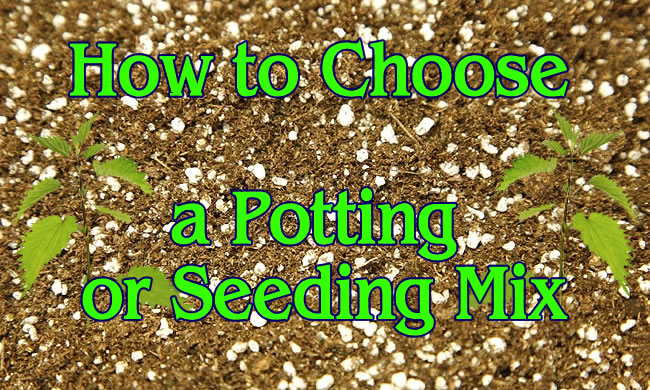There are lots of products on the market today made to start your seeds in. There are even more potting mixes to move you little plants into. Some are great, some are good and some not so much. How do you decide which is the best for you?
First we need to understand what a little seed needs to grow best.
1. Particle size.
Small particles so that little seed does not have to push through large clumps to get its shoot up to the surface and its roots in the mix.
Think how you feel when you wake up in the morning. Warm sleepy don’t want to get out of bed. Most people feel that way, but you push the covers back and swing yourself out of bed. That’s what it should be like.
Now imagine if you woke up with a few boulders and giant lumps of stuff sitting on your chest. First you need to push these out of the way before you can even think of getting the covers off and getting out of bed. Think you might be unhappy about that. Think you are going to be late to work that day? You bet.
This is how a little seed would feel. In a fine light potting mix it can stretch, yawn, the push out its little roots and raise its shoot to the light above no problem.
If the mix is heavy and has large pieces in it, that seed has to fight to get around them. Its harder for it to put out roots is has to find a path between the ‘boulders’ to push the roots. It has to work hard to get that shoot up to the surface. Its going to take a lot longer to grow in any way. If the boulders are too big and heavy it may be far to much for the little seed and it may die in the attempt.
2. Water.
Obviously seeds and plants need water to grow. Therefore its important that the starting mix holds water well so there is plenty available for the little seeds roots to take up without being waterlogged which can lead to fungal growth that can kill little roots very fast.
3. Air
Roots need air too, they breath just as much as the shoots do. This is why many plants don’t do well in waterlogged or very compacted soil. There is no air and the roots cant breath. Good soil and seeding mixes have lots of air spaces in them to keep air around for the roots to breath. Therefore its very important that the seeding mix is not to heavy so it collapses the tiny air pockets or hold to much water and drown the roots.
SO WHAT IS POTTING OR SEEDING MIX MADE OF?
Most seeding mixes are made of very similar materials. Its how they are combined and in what quantities that is most important.
1. Peat Moss.
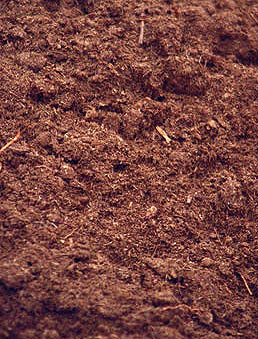
For the most part I am against using peat moss because its not a renewable resource. The one exception is for seeding mixes where it is certainly the best option to use. It is certainly a wonderful organic compound its light and it absorbs a great deal of water. It is the basis for almost all seeding starter mixes. The best ones use a very finely milled peat moss which makes it perfect for little seeds. Ones that use a harsher milled mix might be OK but often the particles are too large making it harder for small seeds to grow quickly and easily. Finely milled mixes are also easier to use in small individual cell seeding trays and they hold water well.
2. Perlite.
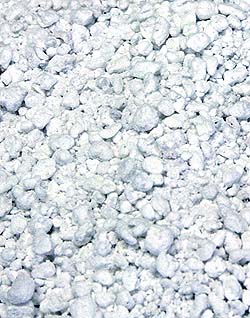
This is that white stuff you see in almost all mixes. Its actually a natural glass, another non renewable resource. Its formed from natural glass and heat, so it’s the popcorn of glass. In the same way that popcorn is much lighter and fluffier than the corn kernel kind of like popped glass just like popcorn. This means that it has a really big surface area with lots of holes for air to get trapped in for nutrients to be held in until the plant needs it. It helps to retain water so that the mix does not dry out as fast. In its natural state it is sterile so will not bring any diseases to new seedlings. Perlite is used a lot in horticulture and is a major component of a almost all seeding mixes. This lightweight bright white rock is often mistaken by consumers for polystyrene, and some cheap potting mixes in fact do use polystyrene instead of Perlite. This is a cheap trick as polystyrene has none of the good properties of perlite its just there to bulk out the material and fool the consumer.
The white color of perlite also helps to reflect light back off the seeding mix, this helps to keep the soil temperature down and reflect light back onto the growing seedlings.
The major disadvantage of perlite is that it is very light, so it can float to the surface if there is too much water or rain. If mixed with soil after a heavy rainstorm perlite often rises to the surface and floats away in large collections. This can be unsightly in the garden and is obviously no use to the soil at all. Use perlite in seeding mixes but keep it out of the garden mixes.
Perlite comes in many sizes from extra coarse to very fine. Good seeding mixes use a finely milled perlite to give a good fine mix with the milled peat moss and other ingredients. Don’t use a mix with a course perlite for starting seedlings to little seeds there are like giant lightweight boulders.
3. Vermiculite.
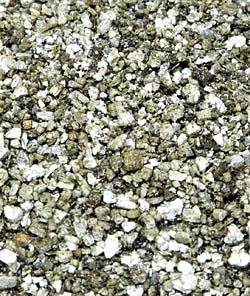
This is also a expanded mineral. Vermiculite is an aluminum-iron-magnesium silicate that forms shiny sheets rather like mica with which it is often confused. It is shiny gold brown in color. When vermiculite is heated the sheets expand or ‘exfoliate’ to form elongated concertina like particles which are lightweight, incombustible, compressible, highly absorbent, and non-reactive. The particles look like shiny fluffy puff pastry and in this state vermiculite can hold up to 4 times its volume in water. The really nice thing is that they are very attractive to cations and have a very high exchange capacity because of the surface chemistry. For your plant this means it is able to have access to a range of minerals especially calcium, magnesium and potassium as well as ammonium which are essential for good healthy growth. Instead of these minerals being washed out of the soil mix the vermiculite attracts them and holds them until the plant roots can access them.
Both perlite and vermiculite are pH neutral (around 7.0) and they are sterile making them excellent choices for potting mixes.
Many potting mixes have just these three things in them and mixed in the right quantities this is pretty ideal. Most plants do very well starting in such a mix.
OTHER MIX INGREDIENTS
Shredded bark or shredded wood.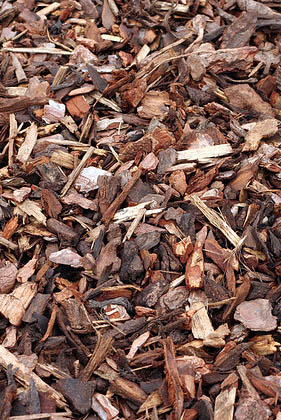
Some mixes contain shredded bark or bark mulch. This can be fine depending on a few things.
1. Preferably it’s not pine bark. This usually contains too much acid and can throw off the pH of the soil mix. Most plants don’t like a high pH so its good to get something that is neutral. If you do use a mulch contain pine bark ensure that is has been pH balanced to about 7. If not then pass it by.
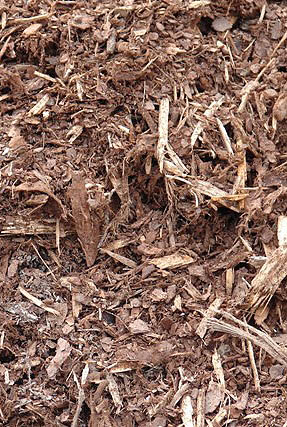
2. Its shredded quite fine. If it has large bits and twigs in it then its not going to be too good for the plants. When I think of large here I mean something about ½” ( cm) long or more. If its over an inch then its definitely a big problem. Large pieces are just like giant boulders to a little plant root. It means they have to struggle around them and cant create the root structure that they really need. The large bark segments don’t offer that much aeration of the soil either. Perlite is a much better option. If pieces are too large then they tend to float when water is added and rise to the surface of the mix. This creates more of a barrier for the little plant to fight through when its trying to grow.
3. It’s been sterilized before the mix was made up. Wood more so than bark has lots of hole in it (like lots of little drinking straws) so there is plenty of space for water retention but those holes have been part of a tree that could have been in contact with millions of different bacterial, fungi and other possible pests. You don’t want to bring that into your mixes when starting little plants. Good potting mixes heat sterilize their ingredients before making up the mix. Check the bag to make sure it’s a sterile mix before buying it.
4. The material is well rotted down. If the bark or wood chips are not rotted down first then when the bacterial and fungi arrive (and the will arrive no matter where you put your mix) they are going to attack the chips for food. To do this they need food too and this will suck up any Nitrogen that is in the mix for the bacteria to use and take it away from the little growing plants. A well rotted mix is essential for good seedling growing.
Coconut Coir Fiber
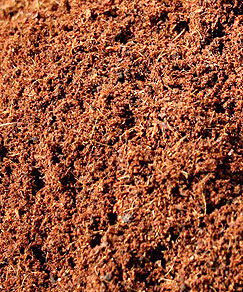 This the fiber found between the husk and the fruit of the coconut. Most gardeners are familiar with it for use in hanging basket liners or biodegradable pots. However more recently it is being ground up into much finer mulch and used to replace peat moss in potting mixes.
This the fiber found between the husk and the fruit of the coconut. Most gardeners are familiar with it for use in hanging basket liners or biodegradable pots. However more recently it is being ground up into much finer mulch and used to replace peat moss in potting mixes.
These fibers are a very good material for several reasons.
They hold about nine times their weight in water so they will keep the mixes nice and moist for longer periods. Once saturated the rest of the water drains away so the mix is not waterlogged. The only downside is getting the fibers fully saturated in the first place can take some time so the mix needs to be well watered before you put any seeds in it. Most good potting mixes come slightly moist to help alleviate this problem.
The major problem is that if it does dry out then it takes a long time to rehydrate it, by which time your poor little plant will be dead. If watering is done on a consistent basis this should not be a problem. However if you intend to combine it with your garden soil later in the year be aware that it drying out could be detrimental to your soil.
Grades or coconut Coir Fiber.
Just like peat moss coir fiber comes in different grades, course and fine. For starting seeds the fine grade is essential since it is milled so that the fibers are small and easy for little seeds to deal with. The coarse grade has much longer fibers and should only be used in potting on mixes.
Concerns about safely and sustainability coconut Coir Fiber.
While at one time using coconut products would have been considered a good renewable resource this may no longer be the case. With Lethal Yellowing Disease decimating and killing off so many coconut trees around the world soon it may be far more difficult to get any coconut products. Many countries have seen devastating losses of up to 85% of their coconut palms. There is no cure for the disease and trails to find resistant varieties are slow due to the slow growing nature of palms. However most trials have not found a good resistant variety so far just some that succumb more slowly. The only treatment for the disease is to inject the trees with antibiotics. After such treatment the coconuts are no longer fit to be eaten and any fibers that are produced from these fruits should not be used in potting mixes that will be used for food plants as the antibiotics could easily be transferred to the new plants.
The upshot is that using coconut fiber is now becoming suspect since there is no way of knowing if your fiber has been treated with antibiotics. I don’t like to recommend mixes using this fiber.
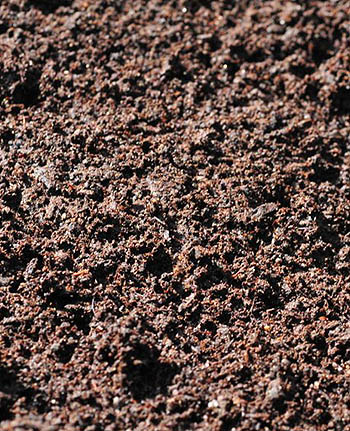
Compost.
The word compost embraces many different things. For simplicity here I will describe it as ‘any organic material that has been broken down into fine rich particles.’ This material could come from other plants, wood chips, weeds, straw, cow manure, horse manure almost any plant source or plant grazing animal waste.
No matter what material is used before it is incorporated into soil and especially into potting mixes there are a few basic rules that should apply.
1. It should be very well broken down. There should not be any large particles at all. The material should look like rich black soil.
2. It is STERILIZED! Before adding any compost to a potting mix it must be sterilized. Compost is made by bacteria, fungi and other organisms feeding on the organic material. This is basically their waste product. However in its ‘raw’ state it’s still going to be full of all those organisms. This is good, if you want it in the garden. If you want to start seeds or little plants in it then it’s not. You can have all kinds of problems.
The most common ones would be.
1. Bugs. Little flies, maggots or any other unpleasant pests. They will have laid their eggs in the compost, mostly because it’s rich and it’s warm. Then later they hatch all over your seedlings. Not a good start to life. This is especially a pain if your seeds are in the house.
2. Fungi and bacteria. With improperly or unsterilized mixes you can get ‘mushrooms’ growing in your seeding mix, or you can get a fine white film growing over the top of the soil as the fungi feeds on the material that was only half sterilized. In either case its not good new for you little seedling.
It’s not always easy to tell if your mix has been sterilized or not. I have certainly had many mixes that are available in big box stores come in with little round egg case balls festooning the mix. Sadly ‘miracle grow’ mix does seem to be one of the worst culprits for this. In most cases the eggs have been killed but to my mind they should never have been there in the first place!
For the best growing results for small seeds and plants we suggest you don’t pick one with compost in it. Mostly because you can never be sure that it has been treated property and you will not be importing more problems into your home. Leave the compost for outside and incorporation into the soil not in pots.
WHAT TO LOOK OUT FOR.
Polystyrene balls.
Some very cheap mixes use little polystyrene balls in their mix instead of perlite. This is a terrible idea. They think you wont notice the difference since they are both light and white in color. The problem is that polystyrene does nothing for the plants it just bulks out the mix for the manufacturer so you think you are getting more for your money while all you are doing is lining their pockets with case. The polystyrene does not have the open weave of the perlite it does not hold water or do anything good at all. Even worse it floats to the surface when you water it. Look closely at the mix before you buy. Never buy one with polystyrene.
Egg cases, little translucent balls or other suspect material.
Not all egg cases are visible, the worst ones with tiny flies and fungus gnats are never visible. Sometimes you will find mixes with small translucent balls about 1/8” across. These too are egg sacs. If you see anything suspect don’t buy the mix, even if its on sale. Its not worth the hassle you will have later.
THE BEST SEED STARTING MIXES.
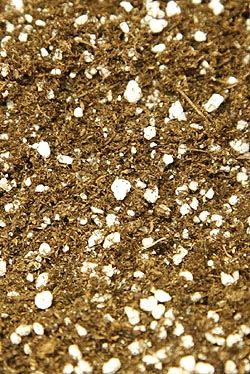
The best ones contain the above combination (peat moss, perlite and vermiculite) but milled very fine. This ensures that the seedlings don’t have any huge boulders to try and grow around but there is good aeration of the media with lots of space for water retention. Starting with perlite and vermiculite will get a fairly sterile mix and its very uncommon for peat moss not to be also. This is essential for seeding. You don’t want weed seeds, fungi, bacteria or other things in it to attack the little seedlings as they are growing. SO don’t reuse seeding mix use it once out of the bag then any failed seeds use it somewhere else or mix it in the garden. Never reuse it for seedlings. Its OK for potting on IF it is mixed with other things too but not alone.
Some seeding mixes also contain some plant food. This can be considered desirable but its just as easy to feed the seeds yourself once they start to grow. The amounts in the mix wont last long on the seedlings anyway so you will still have to feed them. Its not worth paying much extra for food in the mix when you need to feed them anyway.
Potting mixes.
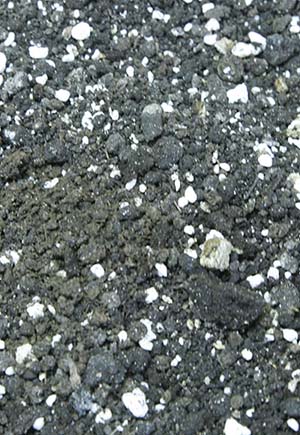
These can contain other things but the staples of perlite, vermiculite and peat moss. A good potting mix will often have a nice compost incorporated into it. The mix should still be fairly fine. If you can see larger pieces of wood chips pass it buy. Read the bag see if it states that its sterile.
LOOK AT THE MIX BEFORE YOU BUY IT.
Yes I know the bags are sealed but there is usually one that is not. If not stick your finger in the end and pull a little out anyway. Its vitally important that you know what you are buying. If you don’t look you may end up carrying home a lot of polystyrene, bugs or wood chips. Always inspect the mix before you buy it and make sure you are satisfied with the composition. If possible buy your mixes from a good garden center or commercial store. NOT from a big box store. These places often carry cheaper materials but they are cheaper because they have not been treated properly. YOU are investing effort into starting your seeds make sure its not wasted by buying an inferior mix.
Once you find a brand you like, stick with it. You will be happier that way.
Give your seeds and little plants the best start they can have, they will reward you with better plants.

